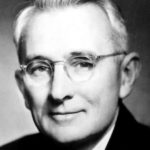It’s been 11 years since the publication of Rich Dad Poor Dad. Robert Kiyosaki’s mega-hit best seller not only challenged our preconceptions about money, it cast light on what he says is an antiquated education system that teaches subjects many will never apply in real life, preparing for a world that will never exist.
To say the book ruffled a lot of feathers would be an understatement. But that was the whole point. Kiyosaki wasn’t looking to write just any financial book. There were hundreds of financial books, in his view, that said the same thing. He wanted to let the education system know it was failing in teaching children what they need for financial success. He wanted to shake up parents by telling them some of the most dangerous advice they could give their children was to go to school, get good grades and look for a safe secure job.
This advice was based on the old rules of money when people worked for one company for 30 years and retired with a fat pension. Those days are long gone. With corporate mergers and downsizing happening every month, Robert Kiyosaki says it’s just too risky to play by the old rules. In the end, employees lose and owners and investors win.
Two Dads Two Philosophies
Rich Dad Poor Dad’s monumental success showed that Robert and wife Kim Kiyosaki, co-founders of The Rich Dad Company, were on the right track in their mission to educate and empower people by improving their financial literacy.
Robert’s financial philosophy was honed at a young age when, having been raised by two “dads,” a rich one and a poor one, he had been taught to strive for two different goals. His educated father (his real father) wanted him to go to school and get a cozy corporate job. His rich father (his best friend’s father) told him to own the corporation. Both men were successful in their careers and earned substantial incomes. Yet one struggled financially his entire life. The other would become one of the richest men in Hawaii. One left his family with millions, while the other left unpaid bills. Both men valued education but different courses of study. Both had different views of money—one believed money to be the root of all evil; the other believed the lack of money was the root of all evil.
As a young man having two “fathers,” Kiyosaki realized he needed to be careful about which thoughts and words he adopted as his own. At 9, he decided to listen to and learn from his rich dad about money. And in doing so, his education about money began. His rich dad taught him over a period of 30 years, finishing when he fully understood that money is only one form of power. Financial education is where the real power lies.
Kim Kiyosaki was raised with a “rich dad” philosophy, so her views were similar to Robert’s when they met. Kim’s career started in advertising, working for a top Honolulu agency. By 25, she was running a Honolulu business magazine. A couple years later, she ventured into her own business, a clothing company with national distribution. In 1989, she started a real estate investment career that now controls millions of dollars in property.
Kim joined Robert, her business partner and now husband of 24 years, in teaching entrepreneurial business around the world. That business grew to support 11 offices in seven countries. They sold the business in 1994 and “retired.” But retirement for them was short-lived.
Rich Dad Poor Dad has been on all the best-seller lists for years. Kim has written a best seller, Rich Woman, and Robert has written several others, including Why We Want You to Be Rich with Donald Trump. “Donald has really inspired me. You know, I’m just an ordinary millionaire, and now I’m inspired to reach his billionaire status.” Robert says.
Assets Don’t Make You Rich
Robert Kiyosaki knows well that his success is partly due to his going against conventional wisdom. “When I wrote Rich Dad Poor Dad I told people that your home is not an asset,” he says. “People really criticized me for saying that, but if you look at what is happening today with the mortgage crisis, families are getting wiped out because they can’t afford their house payments.” Experts are saying that in 2008 up to 2 million people will lose their homes. “These are good people—but people who lack the financial education to make good money choices.”
Robert defines financial intelligence this way: If you put money in your savings account, the bank is going to pay you 3 percent. But the problem is inflation is running at 3 percent so your financial intelligence is 0.
“You can lose money on anything,” says Robert, who as a young adult began investing in gold. Although he didn’t make much money, gold taught him many priceless lessons. He realized it’s not the assets—real estate, stocks, mutual funds, businesses or money—that make you rich. It’s the information, knowledge, wisdom, and know-how—one’s financial intelligence—that makes a person wealthy.
Increase Wealth: Start a Business
With companies downsizing, the failing dollar and higher cost of living, many families feel the pinch. “The need to earn more money has never been greater than right now,” Robert says. For many, he says, “the No. 1 thing people can do to increase their wealth is to start a part-time business. They can start a small home-based business, an Internet company or network marketing business. The key is to start small and learn everything about the business.”
Most people have enough financial intelligence to make money, Robert says. One reason they aren’t able to make more money is because they fail to realize “it’s the process that makes them rich, not the money. Many other people fail to become rich because they value a steady paycheck rather than going through the learning process of becoming financially smarter and richer. They are held back by the fear of being poor,” he says.
“In my second book, The Cashflow Quadrant, I talk about the four types of people in the business world. It’s targeted to people who are ready to make changes in their lives—changes far greater than simply going from job to job—and to start building wealth.”
In 1984, early in their marriage, Robert and Kim were trying to get their business off the ground. Robert attended seminars and studied all the time. But they were struggling financially. “We were homeless for a period of time, even sleeping in our beat-up old brown Toyota. And everybody kept saying to us, ‘Why don’t you just go get a job?’ or ‘Why don’t you put the dream on hold?’ ” Kim says. “The easiest thing would have been to quit, but we didn’t quit.”
Taking risks and making mistakes are essential to learning, Robert says. “I take on risk because it forces me to get smarter. When I buy an apartment house, it forces me to mitigate and minimize that risk—to get smarter, to study more, to know what I’m doing.”
Reaching Out
Generosity is a big key to the Rich Dad philosophy. Robert and Kim are committed to supporting organizations such as the Boys & Girls Club of Phoenix. Instead of giving money away, they are giving the tools to teach. And they are teaching these kids in an unconventional way—with a board game. “Games like our Cashflow Quadrant are a powerful way to teach anyone financial education—especially kids—because they learn by doing,” Kim says. “These kids were so excited to learn and the progress they made in just a short time in terms of learning about money was simply amazing.”
The staff invited the children’s parents to come play the game, and now they are learning the basics of finance, accounting and investing. “That’s really what our message is all about,” Kim says. “The Rich Dad philosophy is not about holding a person’s hand and telling them how to do it. We are all about giving people the tools and the education to go out and do what they want to do. We are not about saving people. We are about enabling and empowering people.”





